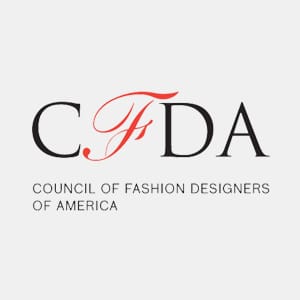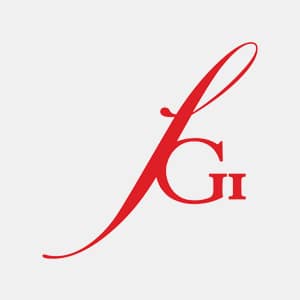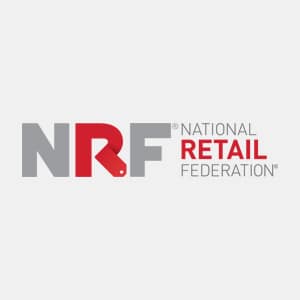Get Matched With Fashion Programs
What Does a Career in Fashion Design Entail?
The world of fashion design is a big tent. While the fashion designers working at haute couture houses are the star performers, the fact is that everyone wears clothes and there is a place in the fashion world for designers at every level. What all of these designers have in common, however, is an eye for style, trends, and what consumers want. In other words, they have a vision. While it is possible to pursue a career in fashion design without a degree, it's not always advisable. A degree shows you have the skills necessary for this demanding and exciting career. Most successful designers have at least a bachelor’s fashion design degree or complete degree programs in fashion merchandising or another niche in the fashion industry. As a fashion designer, expect to work in a large city in the U.S. and these graduates are also in demand internationally.
If you wish to enter the fashion industry with a fashion design degree, here are just a few options for students who are looking for design majors at the university or school of their choice:
- Visual Arts
- Textile Design
- Product Development, design, and merchandising
- Visual Merchandising and Fashion Merchandising
- Costume Design
- Fashion Illustration
- Computer Aided Design
Featured Online Programs
How to Become a Fashion Designer
What is a Fashion Designer?
A fashion designer creates the look of apparel and accessories. They determine the fabric, shape, color and many other aspects of a garment. The process starts with an idea, progresses into a sketch or drawing, and then outlines how garment workers should turn the design into actual clothing.
What is the difference between a Fashion Designer and a Technical Designer?
 People in both fields work within the fashion industry, and both are absolutely necessary for fashion creation. A fashion designer comes up with the idea for the design, and the technical designer takes that idea and makes it into a reality. The two work together to ensure all of the details are correct, and then the technical designer works with the production team to make a sample. If the sample is cleared by the fashion designer, perhaps with some tweaks, the garment can then go into mass production.
People in both fields work within the fashion industry, and both are absolutely necessary for fashion creation. A fashion designer comes up with the idea for the design, and the technical designer takes that idea and makes it into a reality. The two work together to ensure all of the details are correct, and then the technical designer works with the production team to make a sample. If the sample is cleared by the fashion designer, perhaps with some tweaks, the garment can then go into mass production.
Typical Fashion Design Degree Requirements
 An online fashion design degree combines hands-on experience and classroom studies to provide the graduate with knowledge needed to get into internships with companies and go on to a commercial career. An internship isn't a university requirement, but can help students a lot. A typical four-year liberal arts degree will require up to 120 credit hours, while an associate takes significantly less time. If you’re looking to create a portfolio and jump right into a career, an online associate’s degree may be all you need if you are willing to work hard and spend time networking.
An online fashion design degree combines hands-on experience and classroom studies to provide the graduate with knowledge needed to get into internships with companies and go on to a commercial career. An internship isn't a university requirement, but can help students a lot. A typical four-year liberal arts degree will require up to 120 credit hours, while an associate takes significantly less time. If you’re looking to create a portfolio and jump right into a career, an online associate’s degree may be all you need if you are willing to work hard and spend time networking.
Typical Fashion Designer Certifications Needed
 While there are no certificates required for fashion design the way a teaching license or CPA are required, you do have the option of attaining a fashion design certificate in lieu of a degree if you already have a degree in some other field. Say you have a BA in an art field or something similar and want to get into fashion design. You can earn a certificate of fashion design the same way you might earn an online associate’s degree.
While there are no certificates required for fashion design the way a teaching license or CPA are required, you do have the option of attaining a fashion design certificate in lieu of a degree if you already have a degree in some other field. Say you have a BA in an art field or something similar and want to get into fashion design. You can earn a certificate of fashion design the same way you might earn an online associate’s degree.
Academic Standards for Fashion Designers
There are no specific academic standards for fashion designers, but you should be aware that whatever school, university, art and design, or fashion design program you attend may have academic standards or a requirement for continuing attendance. This is something you should research within the school, university, or fashion programs you prefer.
Exam/Experience Needed to become a Fashion Designer
 Whereas exams are not a big thing for any kind of design career, you want to make sure you have a powerful portfolio. You could do this on your own while working through whatever online bachelor's degrees or fashion design program you choose, but you could also opt to go out for an internship with a well-known designer. There are well-known names in the design industry and adding their name to your resume or portfolio would be a big boost to your ongoing career.
Whereas exams are not a big thing for any kind of design career, you want to make sure you have a powerful portfolio. You could do this on your own while working through whatever online bachelor's degrees or fashion design program you choose, but you could also opt to go out for an internship with a well-known designer. There are well-known names in the design industry and adding their name to your resume or portfolio would be a big boost to your ongoing career.
Online Associates Degree
With a two-year online associate’s degree, many aspiring fashion designers will receive enough knowledge to obtain a job or high-profile internship in the industry. With an online associate’s degree, the student will learn basic skills, including:
Online Associate degree sample courses
- Design Theory
- Sewing
- Tailoring
- Color Theory
Online Bachelors’ Degree
A person majoring in fashion design may receive a degree in their major, but they may want to minor in a subject that can help them in the fashion business world, such as marketing. The curriculum for the major may include:
Online Bachelor’s degree sample courses
- Fashion History
- Draping
- 2D or 3D Design
- Pattern Making
The internship usually takes place during a student's senior year of school. By the time of graduation, students have put together a portfolio, showcasing their best work and emphasizing their particular style in their design majors.
Bachelors Concentrations: Apparel Design, Fashion Merchandising, Fashion Photography, Visual Marketing, etc.
Online Masters’ Degree
Relatively few fashion professionals will obtain an online master’s degree, but for those who do, it may be in a different field that can help them with their business. For example, an online master’s degree in marketing or even an MBA is something a person who wants to run their own fashion business may pursue.
Careers & Salaries
| Field of Study | Entry Level Annual Salary | Mid-Career Annual Salary |
|---|---|---|
| Fashion design | $51,192 | $67,855 |
| Fashion communication | $47,842 | $54,070 |
| Fashion marketing | $54,494 | $78,884 |
| Fashion styling | $15.09/hr. | $19/hr. |
| Fashion photography | $41,749 | Up to $70,000 |
| Fashion journalism | $36,114 | $43,713 |
| Fashion buying and fashion merchandising | $48,400 | Up to $88,000 |
| Fashion management | $40,094 | $45,156 |
Fashion Design Occupations
-
Fashion Designer
The fashion designer actually designs the clothes, accessories, or both for retail customers. This involves selecting materials, colors, patterns, and specifying all measurements. They create sketches for their ideas either by hand or via computer-related design programs using fashion illustration and computer aided design. They must keep abreast of current fashion trends and styles. In 2017, the median pay for a fashion designer was $65,100 per year. -
Garment Technologist
The person in this role works with designers and others in the garment creation field from the original idea or fashion illustration to the finished product. Duties include fabric recommendations, design changes, producing items to budget, and ensuring the construction methods are correct. The average garment technologist earns $145,900 annually. -
Pattern Cutter
The pattern cutter takes the design and makes it into paper, which is then made into fabric. All commercially produced clothing was once “on paper” before becoming an actual garment. Once the pattern cutter creates the template, the pattern is usable over and over. This is one of the most vital jobs in the entire garment industry. The 2017 annual mean wage is $57,500.Find Online Fashion Schools
-
Product Developer
This job falls into the business side of the fashion design industry. The product developer must make sure that mass-produced fashion is profitable and that all designs meet the technical requirements needed for production. The job requires analyzing proposed lines and making business decisions based on the analysis. As of 2018, the average annual salary for a fashion product developer is $63,200. -
Illustrator
Fashion illustrators are design creators, whether they do so by hand – the old-fashioned way – or via computer. These illustrations are used for fashion ads and marketing, but also for buyers and stylists purchasing items for clients. Illustrators usually work for fashion houses or a specific designer. Obviously, artistic talent is a necessity, and so is staying current on all the latest fashion trends. Fashion illustrators earn $50,300 annually on average. -
Stylist
When clothes appear on models or celebrities in print ads, TV, online and other media, a fashion stylist is behind the choice. They collaborate with other creative elements, such as the photographer and hair and makeup artist, to come up with the desired look for a particular project. Fashion stylist salaries range from $22,951 - $37,200, based on the level of work they are doing. -
Writer/Blogger/Vlogger
Fashion writers, bloggers, or vloggers provide copy or video for fashion publications, covering fashion shows, photo shoots, and virtually everything involved in the fashion world. These salaries vary widely depending on the types of publications in which the work appears. However, many in this field may earn up to $39,400. -
Journalist
Although similar to, and sometimes indistinguishable from, a fashion writer, the fashion journalist is usually employed by a fashion publication or is the fashion reporter for a general interest magazine or newspaper. As the fashion journalist works his or her way up the ranks, they may eventually become a fashion editor, one of the most prestigious and influential roles in fashion media. Think famous names such as Anna Wintour, Diana Vreeland, Andre Leon Talley and Carine Roitfeld. The average salary for a fashion journalist is $40,700. -
Photographer/Filmmaker
Fashion photographers and filmmakers take photos or videos of apparel, accessories, and models. While many shoots are in-house, others take place all over the globe. The photographer/filmmaker oversees the entire production, including stylists, makeup, and lighting. As of 2018, the average salary is $47,800, although top people in the field will earn much more. -
Studio Manager
Studio managers oversee photographers, stylists, and others working within the fashion studio. The job requires good administration and communication skills. The studio manager is responsible for the overall workflow of the studio, including budget management, invoicing, overseeing model casting, and negotiating with suppliers. A studio manager may earn as much as $43,100 per year, but much depends on the size of the studio. -
Buyer
Someone must select the merchandise for sale at apparel retailers, and that person is the fashion buyer. Most buyers specialize in particular types of clothing, so they know their market and potential customers intimately. The buyer negotiates prices with the supplier, and must decide the markup on items so the store will profit. A strong business sense and negotiating skills are key for successful fashion buyers. As of 2018, the median salary for fashion buyers was $55,800. -
Merchandiser
People in this line promote apparel and related merchandise, but they also deal with fashion development and production and purchase materials from suppliers. As with many jobs in the industry, staying on top of trends is crucial, since no one wants to market clothes that are even slightly out of date. The average fashion merchandiser salary as of 2018, is $51,300. -
Trend Forecaster
As the name implies, a person in this position is seeking out the next big things in the fashion world. Trend forecasters work for companies and study both market conditions and the buying patterns of consumers. Forecasters usually work in specific markets, such as specializing in teen clothing or accessories or that of business people. Attending fashion shows and industry events is a part big of the job, so anyone planning a career in this field must enjoy traveling. The importance of the trend forecaster in the fashion world is reflected in the salary, which starts at about $71,300 and may reach $150,000 or more. -
Visual Merchandiser
A person in this role develops floor plans and displays of apparel and other items with goal of sale maximization in retail stores. This visual merchandise and the way it is presented is an essential competitive factor in both sales and brand value. The average visual merchandiser salary as of 2018, is $45,900.
Salary by Occupation
| Field of Study | Entry-Level | Mid-Career | Late-Career |
|---|---|---|---|
| Pattern Maker | $41,100 | $52,300 | $75,800 |
| Product Dev/Fashion Designer | $45,000 | $72,500 | $98,300 |
| Illustrator | $40,600 | $50,800 | $56,500 |
| Studio Manager | $65,889 | $83,963 | $93,769 |
| Merchandiser | $43,300 | $55,000 | $61,400 |
Important Questions to Ask (FAQ)
How long does it take to earn an online bachelor's fashion degree?
 Most students will earn a bachelor’s degree within four years, but that is not possible for every individual. It will depend on the number of hours you take every semester (if you take a part-time schedule or double major it will, of course, take longer), and whether you are taking an accelerated or online program in fashion design. Online programs can shorten the amount of time it takes to earn bachelor's degrees and even to complete graduate programs.
Most students will earn a bachelor’s degree within four years, but that is not possible for every individual. It will depend on the number of hours you take every semester (if you take a part-time schedule or double major it will, of course, take longer), and whether you are taking an accelerated or online program in fashion design. Online programs can shorten the amount of time it takes to earn bachelor's degrees and even to complete graduate programs.
How much does a Online Fashion Degree Bachelor’s cost?
Depending on the school and a student’s resident status, an online bachelor’s degree in fashion may cost between $4,000 to $28,000 annually or more. As an example, the renowned Fashion Institute of Technology in New York City charges approximately $10,000 per semester for New York residents, but non-residents will find themselves paying twice that.
Typical Fashion Degree Coursework
Expect to take classes in fashion history, textiles, 3-D design, Computer Aided Design (CAD), color theory, and fashion merchandising. Many schools offer a combination of design and art studies.
Does the school have the major(s) you’re considering?
Fashion exists on so many levels. If there is a field to which you are especially drawn, such as textiles, knitwear, or fashion journalism, look for a school well known in that category.
How many students graduate “on time,” in four years?
 This is known as the graduation rate and it’s a metric most schools provide. If the schools you’re looking at do not provide it on their website, you can usually find it online. This number, if very low, can indicate that there are issues within the school or individual degree programs that may make it more difficult to graduate. Be sure to also look at student reviews of the design degree programs or online bachelor's degrees you are interested in to get a more in-depth view.
This is known as the graduation rate and it’s a metric most schools provide. If the schools you’re looking at do not provide it on their website, you can usually find it online. This number, if very low, can indicate that there are issues within the school or individual degree programs that may make it more difficult to graduate. Be sure to also look at student reviews of the design degree programs or online bachelor's degrees you are interested in to get a more in-depth view.
What kind of accreditation does the program hold? How is it regarded in the field?
With a fashion design degree, there are several top “name” schools. This is a field where going to a well-known school can really make a difference in terms of mentoring and exposure. However, community colleges or a state university, especially those not far from large cities, can also offer a good, fashion-related education from online bachelor's degrees to graduate programs.
Software/Technology/Skills Needed
Today’s fashion design students will learn 3-D design and CAD skills along with sewing techniques passed down the generations by experts. Students should also possess, or get training in, good social media skills for branding promotion. You may even consider taking some marketing classes, either as a concentration, or to teach you how to connect with your audience.
Online Fashion Design Degree Scholarships
There are numerous online fashion design degree scholarships available for qualifying students. Here are some of the best known:
-
YMA Fashion Scholarship Fund
This organization grants the most scholarships in the entire fashion community. In 2017, for example, 237 young people planning for a career in the fashion industry received scholarships. -
Geoffrey Beene National Scholarship
The Geoffrey Beene Foundation awards four $30,000 scholarships annually to students enrolled at a qualifying YMA FSF member school. Each school may submit a nominee. That person must then compete in the Geoffrey Beene case study. The eight finalists come to New York City and present their case studies to the YMA SFS Executive Committee. The top four finalists each receive a $30,000 scholarship award, while the remaining four finalists each receive $10,000 scholarships. -
The Fashion Institute of Design and Merchandising Scholarship
Each year, the FIDM hosts a National Scholarship Competition, with the prize a one-year scholarship for each of eight majors offered by the school. These majors are merchandising and marketing, beauty marketing and product development; fashion design; graphic design; interior design; social media; visual communications; merchandise product development and apparel industry management.
Professional Fashion Design Organizations
- CFDA
- FGI
- ITAA
- NRF

Council of Fashion Designers of America (CFDA)
Council of Fashion Designers of America (CFDA)
CFDA’s mission is to “strengthen the impact of American fashion in the global economy.” This not-for-profit trade organization, established in 1962, hosts the annual CFDA Fashion Awards and stages New York Men’s Fashion Week as well as owning the Fashion Calendar.

Fashion Group International (FGI)
Fashion Group International (FGI)
FGI considers itself the pre-eminent authority on the fashion and design business, and consists of more than 5,000 members worldwide. Its goals include advancing professionalism in the fashion industry, along with presently timely information on current male and female fashion trends. It encourages people to seek careers in the industry, and provides programs and opportunities for networking and career advancement.

International Textile and Apparel Association (ITAA)
International Textile and Apparel Association (ITAA)
The ITAA’s mission is advancing education and scholarship in its related industries. It also works to design four-year online baccalaureate degrees in textile and apparel and help develop professional skills and attitudes needed for success in these industries.

National Retail Federation (NRF)
National Retail Federation (NRF)
The NRF is the world’s largest retail trade federation, with a mission to advance the retail industry’s interests through “trade, communications and education.” It also has State Association Councils, although these require separate memberships. The NRF monitors state retail issues that may later rise to federal level concerns.
Choosing an Accredited College
When choosing a college, check its accreditation. In the fashion world, look for a school accredited by the National Association of Schools of Art and Design (NASAD), which establishes national standards for schools with design-related online degrees. Currently, more than 300 schools have received the prestigious NASAD accreditation. You should also seek out schools that have regional accreditation according to their location. The six regional accreditation agencies are The Middle States Association of Colleges and Schools, The New England Association of Schools and Colleges, The North Central Association of Schools and Colleges, The Northwest Association of Schools and Colleges, The Southern Association of Schools and Colleges and The Western Association of Schools and Colleges. Keep in mind that acceptance to an art and design school, including those for fashion, requires submission of a portfolio of the candidate’s fashion illustrations or other work.
Online vs On-Campus vs Hybrid
When it comes to fashion, there are times when one size fits all. That is definitely not the case when it comes to choosing a type of online college degree. Many students want to pursue a traditional online degree in which all of their education takes place in a classroom along with other students. These students will either live on or off-campus or commute to the school. Students who must work to support themselves or have family obligations may decide an online education is best for their needs. They can takes classes at their convenience rather than adhere to a strict timetable. Many students like a hybrid education, in which they spend some time in class but also complete some of their education via distance learning. For fashion design students, it’s best to have some “hands-on” time with fabrics and the like to literally get a feel for their work.
Frequently Asked Questions
What degrees can you get in fashion?
There a huge variety of fashion programs available that can let you work in any part of the industry you wish. These include degrees focused on textile design, knitwear design, fashion design, costume design, fashion journalism, fashion styling, merchandising, and more. Depending on what you want to do in the fashion industry or where your inherent skills take you, you can choose any of these and still work in the industry of your dreams.
Are there online courses for fashion degrees?
There aren’t just online courses for fashion degrees, there are entirely online programs. And these aren’t available just from state schools either. These are also available from more prestigious schools that are known for their famous alumni, such as the Academy of Art University in San Francisco, California. So, before you think to yourself that you don’t have the time or money to attend some fancy institution across the country, check out the online options from a variety of schools.
How much does a fashion degree cost?
The answer will vary depending on what degree you want, what school you want to attend, whether you intend to go in-person or online, and how much time you’re willing to spend looking for grants, scholarships, and other financial aid. If you attend a state school and apply for plenty of grants and scholarships, you will pay less. If you attend a well-known fashion institute and take out loans to cover your tuition, you will pay more.
What do fashion designers do?
Fashion designers can have a big, bold impact on the fashion industry, or they can have a more subtle impact by helping brands to be more environmentally conscious while still creating fashionable clothing each year. Some don’t work in the industry at large, but instead create small, curated fashion lines that they sell out of their own businesses or boutiques. Depending on where you want to be in the industry, that will decide what you do.
Does the College Have Post-Graduate Job Placement Help & Assistance?
In the fashion world, job placement and assistance are important, but even more so is a solid internship program. Fashion designers need hands-on experience that they cannot fully obtain in school. Fortunately, many fashion design schools require internships as part of their graduation requirements.
Why You Need to Consider that Rating/Accreditation Can Affect Your Salary
There’s no question a “name” school with solid accreditation will open up job and salary opportunities you won’t receive with an unknown, non-accredited school. The latter may prove cheaper as far as tuition goes, and certainly easier to get into, but you will pay for it in the long run. If your school does not have acceptable accreditation, you may have trouble finding much in the way of job opportunities at all. And you will certainly earn less, even if you do find a position in your chosen career field.
sources:
- https://www.raise.me/scholarship/names/geoffrey_beene_national_scholarship
- https://www.ymafsf.org/
- https://fashion-history.lovetoknow.com/fashion-clothing-industry/what-is-fashion-designer
- https://www.bls.gov/ooh/arts-and-design/fashion-designers.htm
- https://www.ziprecruiter.com/Salaries/Fashion-Photographer-Salary
- https://www.payscale.com/research/US/Job=Fashion_Stylist/Hourly_Rate
- https://www.payscale.com/research/US/Job=Garment_Technician/Salary
Search All Programs
